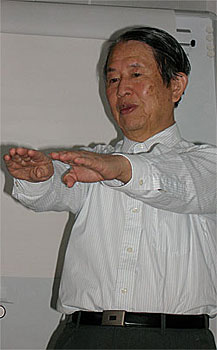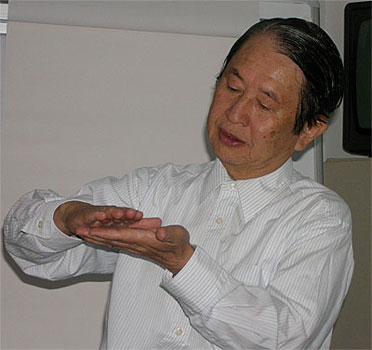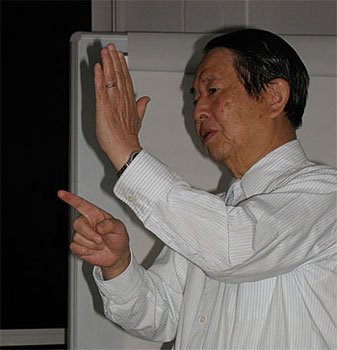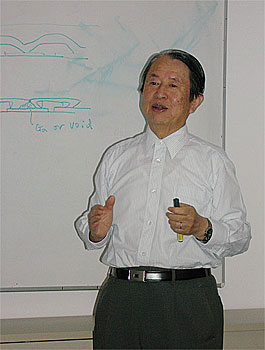
3. IKZ Summer Course on Crystal Growth 2008

The "IKZ Summer Course on Crystal Growth" took place in the month of June 2008 for the third time, thus slowly becoming a highly appreciated tradition. The course is essentially intended as a continuing education for the coworkers of the institute, but is also open to other interested students and scientists, especially from the Adlershof Science Campus. Additionally, it provides a good opportunity to establish personal contact between the listeners and the lecturer, one of the world-wide leading scientists in crystal growth. The attendees of the course have the unique possibility to become familiar with the personality of the lecturer, his personal approach and view. The format of the course chosen in the last two years appeared to be rather appropriate for these purposes and therefore remained the same as in the years before: Within one week one lecturer holds one lesson per day, five in total. The success of this course depends mainly on the lecturer. Following Jeff Derby in 2006 and Alex Chernov in 2007 again one of the most prominent scientists in our field could be attracted as this yearüs lecturer: Tatau Nishinaga, Professor emeritus of the University of Tokyo, President of Toyohashi University of Technology until his retirement in 2008, and Past President of the International Organisation for Crystal Growth (IOCG). It was a great honor and a pleasure for the IKZ that he accepted our invitation to hold the "IKZ Summer Course on Crystal Growth" during his stay as "Scientist in residence" for six months in 2008. It was a pleasure to follow the well-prepared lectures, to discuss with the lecturer and to become acquainted with the kind and humble personality of Professor Tatau Nishinaga. For this we thank him cordially. The general title of Nishinagaüs series of lectures was "Elementary Mechanisms of Crystal Growth and their Theoretical Understanding ü Taking Semiconductors as a Model Material". Although molecular beam epitaxy (MBE) is not the focus of the IKZ research activities, it is an excellent tool for in situ observation of elementary crystal growth processes and its results can largely be transferred to any crystal growth process. His presentation was largely based on insights gained from MBE of various III-V compound semiconductors.
Elementary Mechanisms of Crystal Growth and their Theoretical Understanding - Taking Semiconductors as a Model Material -- Introduction
- Molecular beam epitaxy as a tool for understanding elementary growth processes
- Morphological stability of surfaces and interfaces
- Growth-induced impurity inhomogeneities and their origins
- Reduction of dislocation density by micro-channel epitaxy
- Fabrication of microstructures by crystal growth




